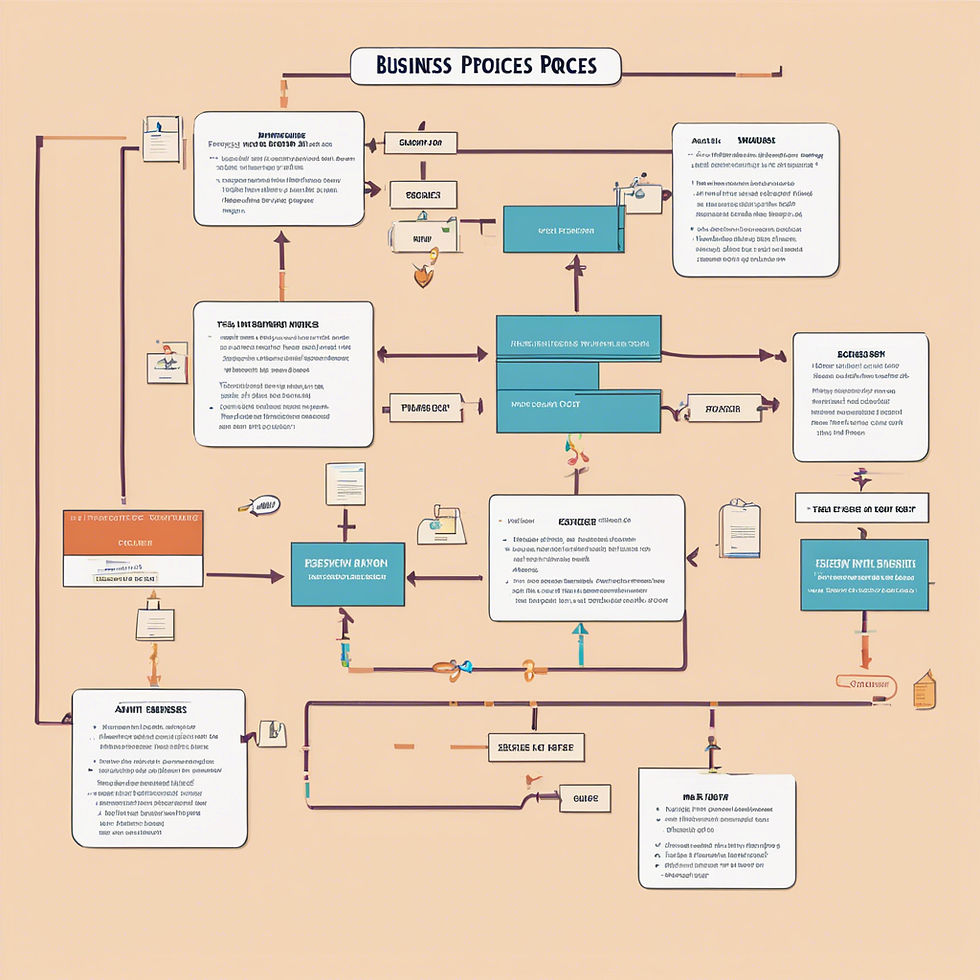Optimizing Process Design: A Key to Organizational Success
- aaguerre
- Oct 27
- 3 min read

Process design is the heart of any organization, as it determines how products and services — the core of its value proposition — are created and delivered.
Optimizing these processes not only enhances operational efficiency but also aligns day-to-day operations with strategic objectives, ensuring sustainable success in a highly competitive business landscape.
This article explores how to optimize process design to achieve organizational goals and deliver outstanding results.
What Is Process Design?
Process design is the act of structuring the activities required to transform inputs into final products or services. It involves identifying, analyzing, and organizing tasks to achieve organizational goals efficiently, effectively, and in alignment with the overall corporate strategy.
Key Elements of Process Design
Inputs: Resources, materials, data, or information needed to execute the process.
Activities: Actions that transform inputs into outputs.
Outputs: The final products, services, or results generated.
Controls: Rules, standards, and policies that regulate activities.
Resources: Human, technological, and financial assets used throughout the process.
Why Process Design Matters for Strategic Success
A well-designed process enables organizations to:
Reduce Operational Costs: Minimizes waste, delays, and resource inefficiencies.
Improve Quality: Ensures consistency and reliability in products or services.
Increase Agility: Enables faster adaptation to market changes and innovation cycles.
Boost Customer Satisfaction: Delivers value dependably, enhancing brand trust.
When processes are aligned with business strategy, execution becomes more effective — driving growth, competitiveness, and long-term sustainability.
Steps to Optimize Process Design
1. Understand Strategic Objectives
Before redesigning any process, it’s essential to understand the organization’s goals. For example:
Cost Reduction: Focus on removing redundant or non–value-adding activities.
Product Innovation: Design processes that encourage creativity and rapid prototyping.
2. Map Existing Processes
Visualizing the current workflow reveals bottlenecks, redundancies, and inefficiencies. Useful tools include:
Flowcharts
Value Stream Mapping (VSM)
BPMN (Business Process Model and Notation)
3. Apply Lean and Six Sigma Principles
Lean: Focuses on eliminating waste and maximizing customer value.
Six Sigma: Aims to improve quality and reduce process variability through data-driven methods.
Combining both approaches ensures efficiency, consistency, and continuous improvement.
4. Integrate Technology
Modern process optimization depends heavily on digital transformation. Examples include:
ERP Systems: Integrate and streamline enterprise resources.
Robotic Process Automation (RPA): Automate repetitive administrative tasks.
Real-Time Analytics: Enable informed, data-driven decision-making.
5. Establish Key Performance Indicators (KPIs)
Measuring success is crucial. Define metrics that reflect process performance, such as:
Cycle Time
Error Rate
Operational Costs
Customer Satisfaction Index
6. Foster a Culture of Continuous Improvement
Optimization is not a one-time project — it’s an ongoing mindset. Encourage employee participation, collect feedback, and promote experimentation to identify new opportunities for improvement.
Success Stories in Process Optimization
General Electric (GE)
Implemented Six Sigma across all operations, achieving significant cost savings and enhanced product quality.
Zara
Designed an agile supply chain process that allows rapid response to fashion trends, reducing inventory levels while maximizing sales.
Toyota
Through its Toyota Production System (TPS), pioneered operational excellence using Lean principles focused on continuous improvement and waste reduction.
Common Challenges in Process Optimization
Resistance to Change: Employees may be reluctant to adopt new methods or technologies.
Poor Data Quality: Decisions based on incomplete or unreliable data can lead to suboptimal outcomes.
Underestimating Required Resources: Process redesign often demands investments in technology, training, and change management.
Greater Efficiency, Greater Competitiveness
Optimizing process design is essential for achieving strategic goals and ensuring organizational success.
Companies that adopt a structured and continuous approach to process improvement not only enhance efficiency but also strengthen their ability to compete in increasingly demanding markets.
By aligning operations with business strategy and leveraging modern tools and methodologies, organizations can build a sustainable path to growth, agility, and long-term excellence.




Comments